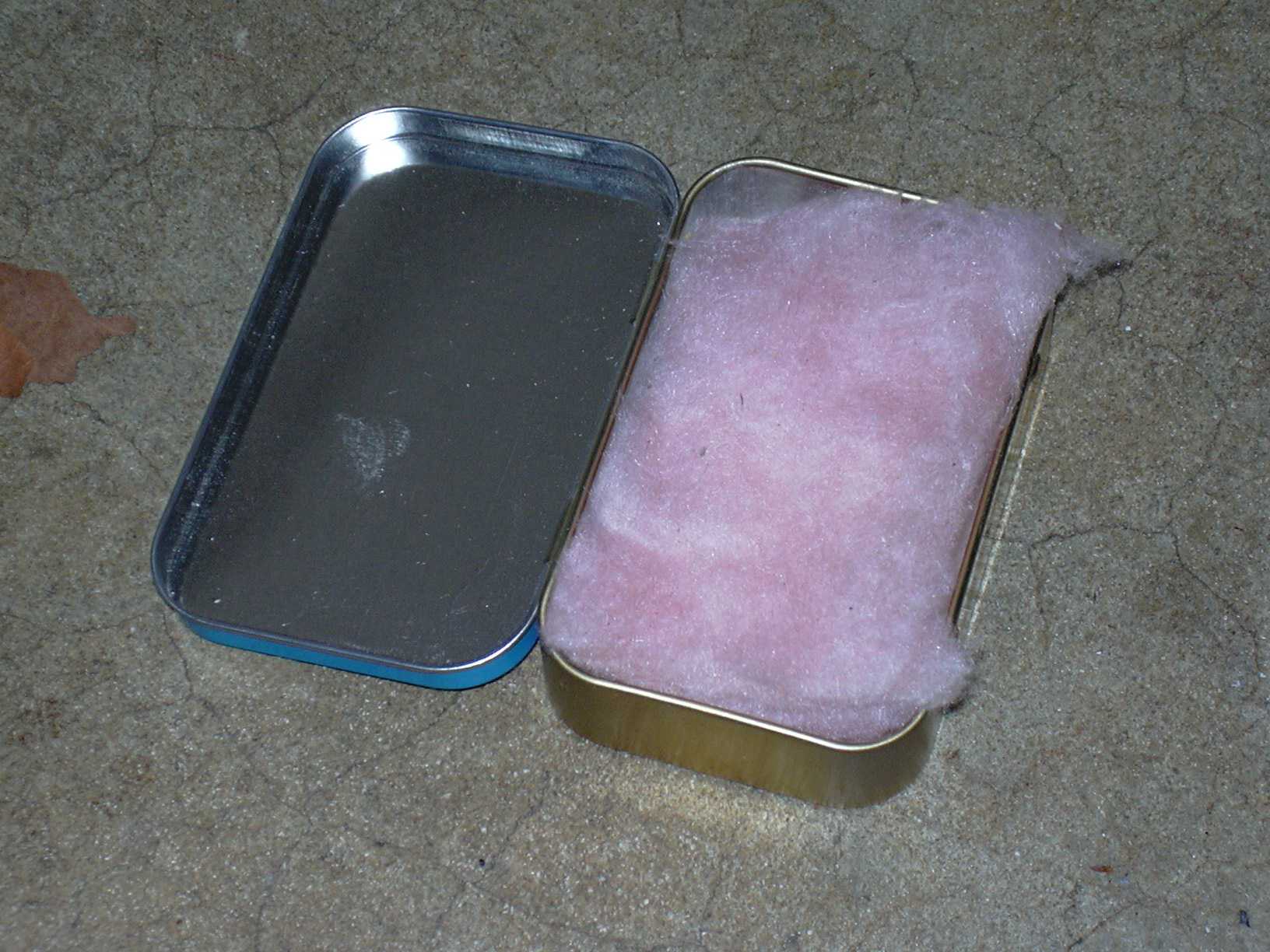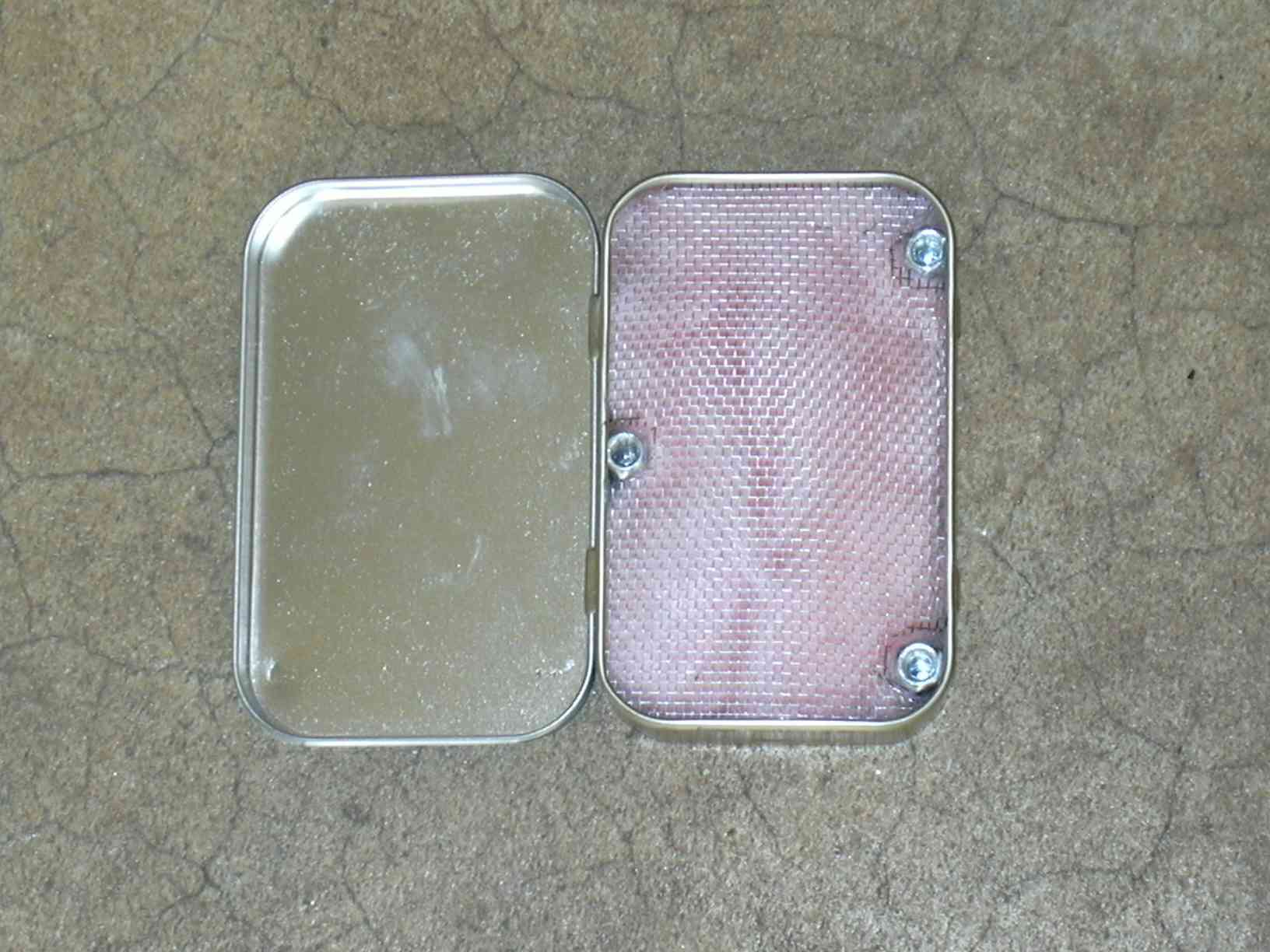 |
 |
|
|
|
 |
 |
|
|
|
 |
 |
|
|
|
PARTS:
1 - altoid tin (a shoe polish or other similar metal tin will probably
work too);
some fiberglass insulation
some aluminum screening;
three rod nuts (available at hardware stores) (optional);
three 1.5" to 2" long screws to fit the rod nuts (optional);
J-B Weld (about $4 at an auto parts or hardware store, but there is
enough for a lot of stoves) (optional)
Heavy wire (like a coat hanger) (optional).
TOOLS:
sandpaper and/or wire brush.
DIRECTIONS:
Clean out an altoids tin, roughen up the three spots where you plan
to attach the rod nuts. J-B Weld the rod nuts to the tin. After allowing
the J-B Weld to set up, loosely pack the tin with fiberglass insulation.
Cut a piece of the aluminum screen the same size as the tin and cut three
holes in the screen over the rod nuts. Pop the screen into the tin, the
lip will hold it in place. Put the screws into the nuts, add alcohol and
light. When cool, the screws can be stored on top of the screen, close
the lid and it is ready to travel.
 |
 |
|
|
|
 |
 |
|
|
|
 |
 |
|
|
|
If you want to save weight or make construction even easier, don't bother with the nuts and screws, use tent stakes to hold the pan or make a stand out of some strong wire such as a coat hanger. As I mentioned, this stove is a little heavier than a soda or juice can stove, about one and a half ounces for the burner, add weight for a stand to that. After a while, the tin box will begin to rust (I've used mine a few dozen times with no signs of weakness though). I'm trying to find an aluminum "tin box" to avoid the weight and rust issues. If anyone knows of a commonly availible aluminum box similar the the altoids tin, please let me know.
Oops, after finishing this, I found the other site that has an "Altoids stove" it mentions that they are having better results using Perlite instead of fiberglass insuation as the wicking material. You might want to give it a try.